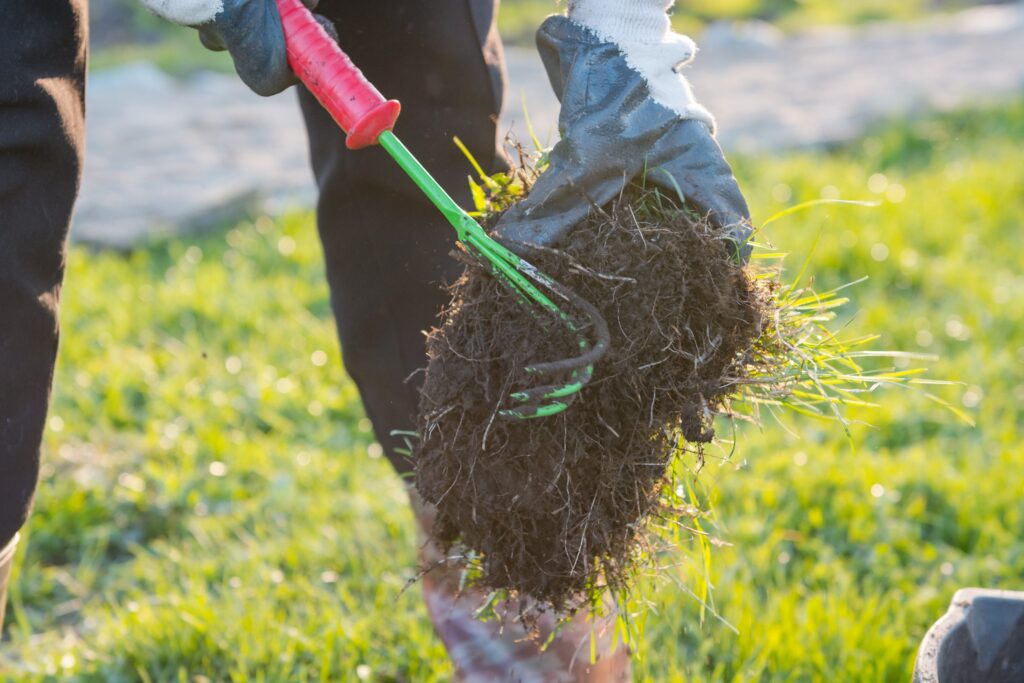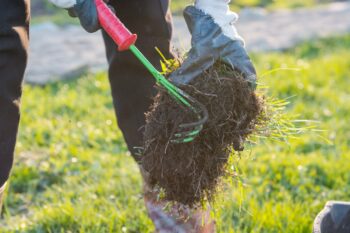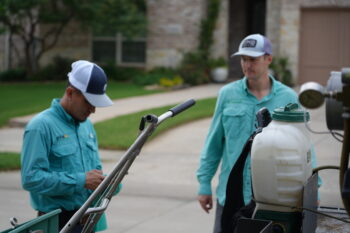Spring in North Texas brings warmer temperatures and weeds eager to hijack your lawn. Texans get unpredictable spring rains, fluctuating temperatures, and clay-heavy soil. All of which creates the perfect storm for invasive weeds to thrive.
Left unchecked, these invaders will steal nutrients, water, and sunlight from your grass. You’ll begin to notice that your lawn is patchy and weak. With the right knowledge and strategies, a dense, thick lawn is possible.
Below, we’ll break down the top 5 spring weeds in North Texas, how to identify them, and weather-smart tactics to stop them in their tracks. Plus, we’ll share how Ryno Lawn Care’s lawn fertilization and weed control services will simplify the battle.
1. Henbit: The Purple Menace
Identification: Henbit (Lamium amplexicaule) is easily recognized by its square stems, scalloped leaves, and small purple flowers. It spreads rapidly in from fall through spring, forming dense mats that smother grass.
Why It’s a Problem: This cool-season annual thrives in North Texas’ mild spring temperatures and moist soil. Its aggressive growth crowds out turfgrass, especially in thin or poorly fertilized lawns.
How to Stop It:
- Pre-Emergent Control: Apply a pre-emergent herbicide in late fall or early winter, before soil temperatures hit 55°F (when henbit seeds germinate).
- Post-Emergent Solutions: Use a selective herbicide containing 2,4-D or dicamba in early spring, but avoid spraying during windy days or before rain (common in North Texas springs) to prevent drift or runoff.
- Cultural Tactics: Improve lawn density with proper lawn fertilization, which strengthens grass roots and reduces bare spots where weeds thrive.
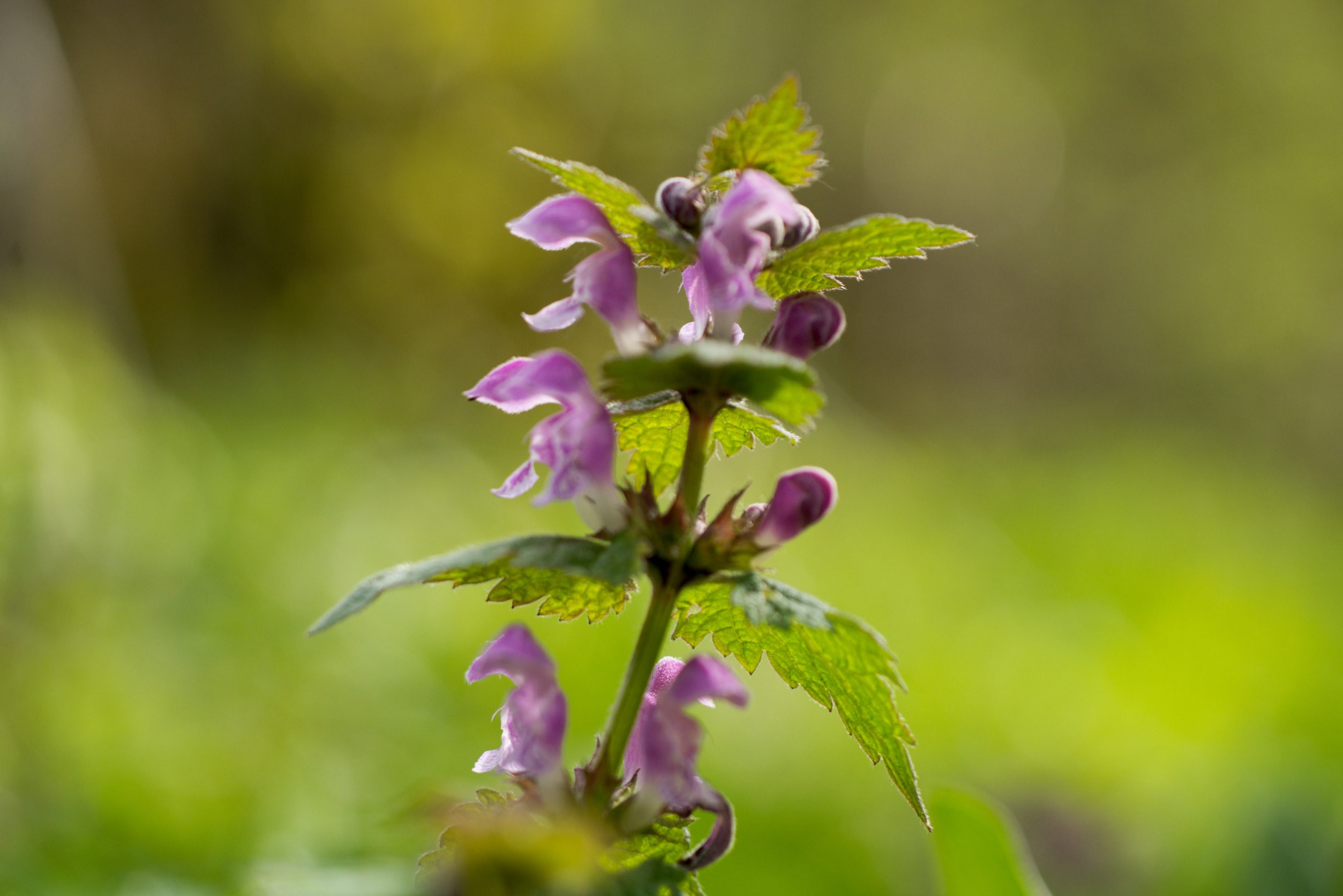
2. Dandelion: The Sunshine Pest
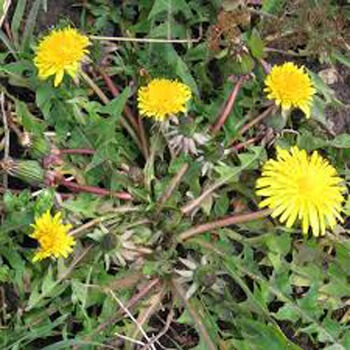
Identification: Bright yellow flowers and jagged “lion’s tooth” leaves make dandelions a familiar foe. Their deep taproots make them resilient.
Why It’s a Problem: Dandelions bloom early in spring and produce thousands of wind-dispersed seeds. They thrive in compacted North Texas clay soil, which stresses grass and creates ideal weed conditions.
How to Stop It:
- Manual Removal: Dig out the entire taproot with a weeding tool. Skip this after heavy rains—wet soil makes roots break off and regrow.
- Herbicides: Apply a broadleaf weed killer in early spring when daytime temperatures are above 60°F. Avoid mowing for 48 hours to let the herbicide absorb.
- Soil Health: Aerate compacted soil in late winter and apply a balanced fertilizer to help grass outcompete weeds.
3. Chickweed: The Stealthy Groundcover
Identification: Chickweed forms low, sprawling mats with small white flowers and oval leaves. It favors shady, damp areas.
Why It’s a Problem: Chickweed thrives in North Texas’ humid spring weather and will survive light frosts. It spreads quickly, stealing nutrients from stressed lawns.
How to Stop It:
- Pre-Emergent Timing: Apply pre-emergent in early fall, as chickweed germinates in late fall and winter.
- Post-Emergent Herbicides: Use products with MCPP or quinclorac, but apply on calm, dry days to avoid wash-off from sudden spring storms.
- Reduce Moisture: Improve drainage in shaded areas and avoid overwatering.
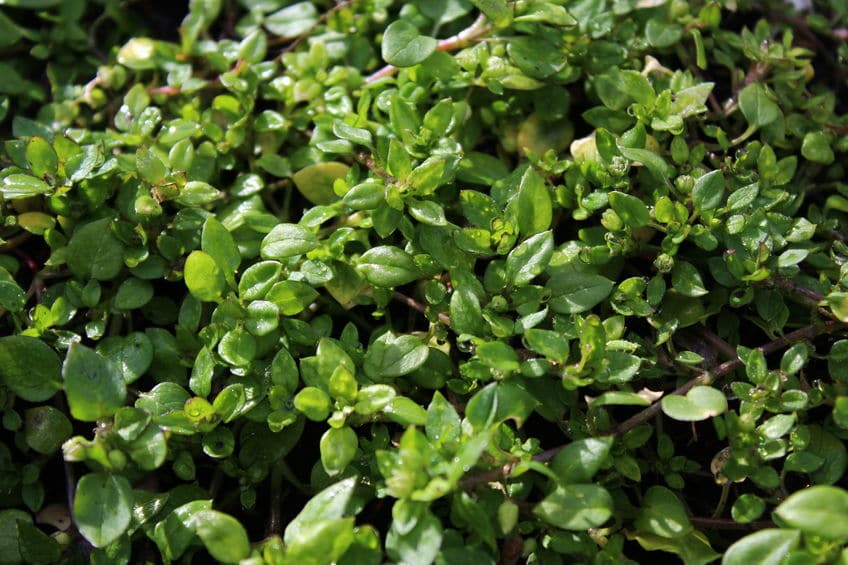
4. Clover: The Deceptive Invader
Identification: Clover has trifoliate leaves and small white or pink flowers. While some gardeners welcome it, it’s a sign of low soil nitrogen.
Why It’s a Problem: Clover thrives in poor, nitrogen-deficient soil—common in North Texas’ heavy clay. It outcompetes grass and attracts bees, which can be a hazard for families.
How to Stop It:
- Boost Soil Nitrogen: Schedule a professional lawn fertilization service to correct nutrient imbalances.
- Herbicides: Use a selective herbicide labeled for clover. Apply in early spring when temperatures are consistently above 50°F.
- Overseed Bare Spots: Fill in thin areas with drought-tolerant grass like Bermuda or Zoysia to block clover.
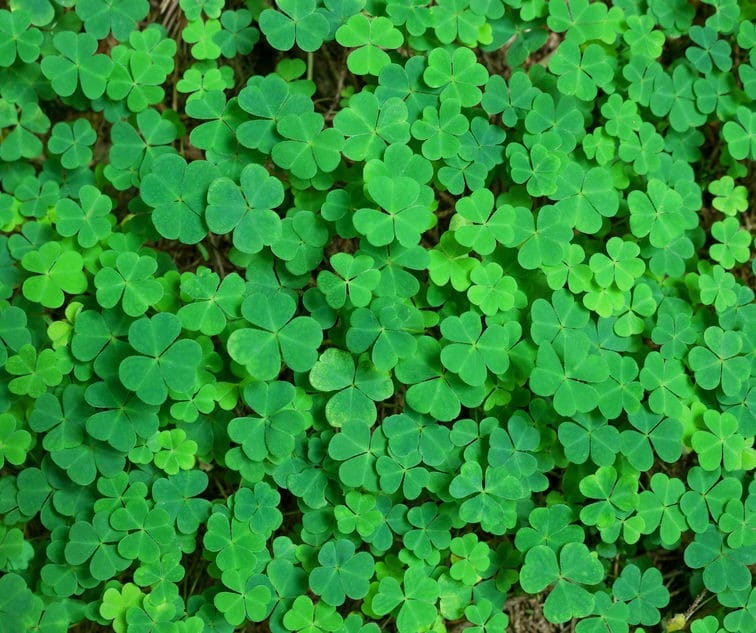
5. Crabgrass: The Summer Preview
Identification: Crabgrass has wide, coarse blades that grow in a star-shaped pattern. It emerges in late spring as temperatures rise.
Why It’s a Problem: Crabgrass loves North Texas’ hot, dry summers but starts germinating in spring when soil temperatures reach 55–60°F. It’s a fast-growing annual that can dominate weakened lawns.
How to Stop It:
- Pre-Emergent is Key: Apply a crabgrass-specific pre-emergent in early March, just before spring rains (watch local forecasts!).
- Post-Emergent Control: Use quinclorac-based herbicides if crabgrass sprouts, but act fast—young plants are easier to kill. Smith (2023) Crabgrass can spread very quickly. If you let it grow for a whole season, or if you miss a particular area, you could find yourself with a growing problem.
- Mow High: Keep grass at 3–4 inches to shade soil and suppress crabgrass seeds.
- Read one of our other articles about how to get rid of crabgrass.
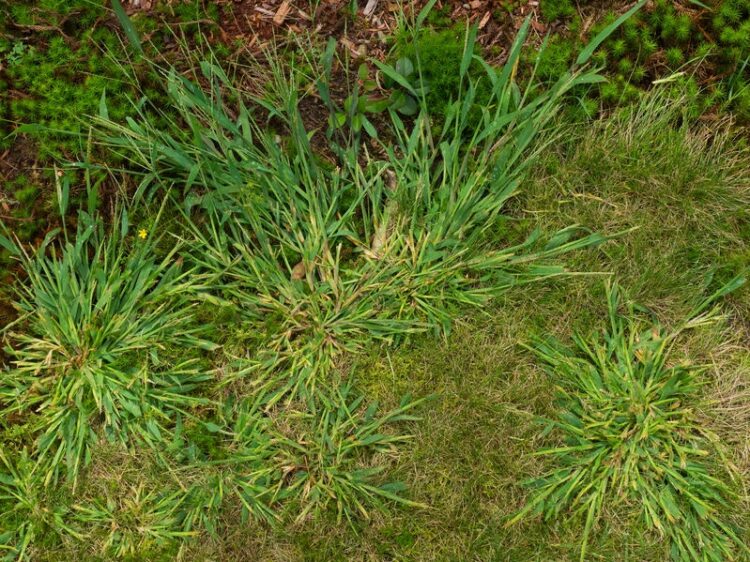
Weather-Smart Strategies for North Texas Lawns
North Texas’ spring weather—swinging from frosty mornings to 80°F afternoons—will derail even the best weed control plans. Here’s how to adapt:
- Track Soil Temperatures: Use a soil thermometer or local extension alerts. Pre-emergent herbicides only work if applied before weeds germinate.
- Time Treatments Around Rain: Apply herbicides 24–48 hours after rain, not before. Spring downpours will wash away chemicals.
- Adjust for Temperature Swings: Avoid herbicides during frost warnings or extreme heat, which stresses grass.
- Water Wisely: Water deeply but infrequently to encourage grass roots to grow deeper than weeds. Aim for 1 inch per week, including rainfall.
Take a look at our Weed and Feed Schedule to find out when and what you should be putting on your lawn throughout the year.
When DIY Isn’t Enough: Call in the Pros
While DIY efforts can tackle minor weed issues, North Texas’ tough climate and soil often demand professional-grade solutions. Ryno Lawn Care’s lawn fertilization and weed control programs are tailored to the region’s unique challenges. Their experts:
- Test soil to customize nutrient plans that suppress weeds.
- Apply pre- and post-emergent herbicides at exact windows for maximum effectiveness.
- Monitor weather patterns to adjust treatments, ensuring your lawn stays protected through storms, heatwaves, and everything in between.
Final Thoughts
Spring weeds in North Texas don’t stand a chance when you combine identification savvy, weather-aware timing, and a commitment to lawn health. By targeting invaders early and partnering with professionals like Ryno Lawn Care, you’ll enjoy a thicker, greener lawn that’s ready to withstand summer’s heat. Don’t let weeds steal your spring—take action today!
Reference:
Smith, K. (2023, February 11). How to stop crabgrass before it sprouts this spring. NBCDFW. https://www.nbcdfw.com/weather/weather-connection/beware-of-crabgrass-its-taking-hold-across-north-texas/3191748/

